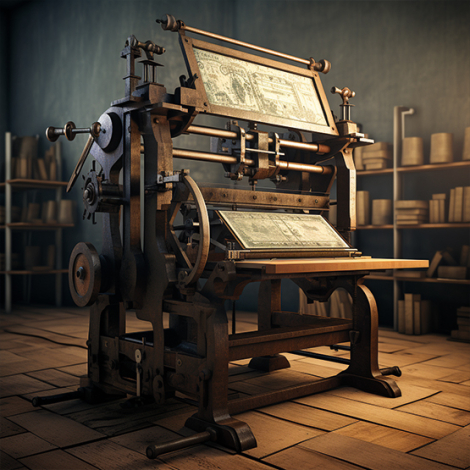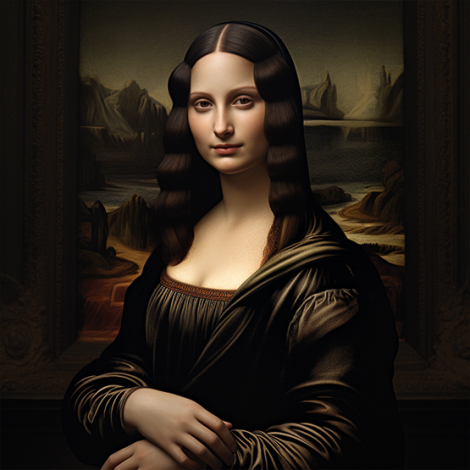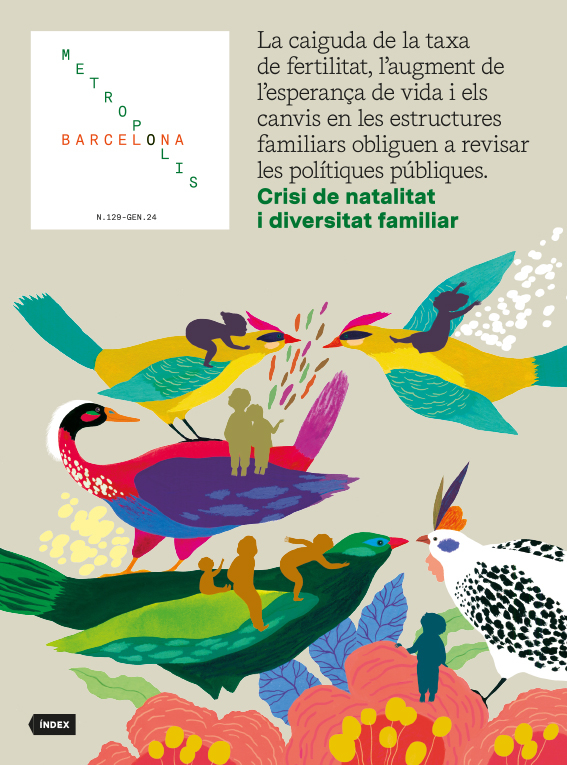Disruptive technologies, intellectual property and image rights
- Culture Folder
- Trends
- Jan 24
- 16 mins
Disruptive technologies are a driver of change and progress in today’s society, but they also pose significant legal challenges in the realm of intellectual property, image rights and the protection of privacy and personal data. Technology is developing at a very fast pace, while the legislator’s response is lagging behind. We need to ensure a balance between the interests of creators, users and society at large and respect for the principles and values that underpin intellectual property.
Disruptive technologies are those that bring about radical changes in society and business models by offering innovative, efficient and accessible solutions that replace or transform existing ones. Disruption and change yield benefits, but they can also adversely affect those who were using a technology that has been replaced by a new one. For instance, photographers, illustrators and writers today are concerned that photographs, illustrations or writing generated by artificial intelligence (AI) are sparking a widespread public feeling that they may be replaced. Intellectual property (IP) and industrial property laws come into play in striking a balance between conflicting interests.
Copyright is characterised as a natural right to the fruits of one’s labour. With the advent of the printing press in the mid-15th century, a decisive milestone in the development of copyright was reached, because it was the beginning of a market for intellectual work. Since it facilitated the reproduction of an infinite number of copies of works at low cost, as opposed to the inefficient system of copying books by hand, an economic profit was yielded from the distribution of copies. A distinction also began to be made between rights to the copy of the work (the original copy) and rights to its intellectual content (the genesis of copyright law). These early laws aimed to balance the interests of the parties involved: authors on the one hand and publishers on the other. Throughout history, as new technologies have developed, the legislator has provided solutions to allow for this balance.
Between the printing press and AI, many technologies have demanded a response from the legislator to protect the interests of authors and publishers.
It is also palpable when it comes to the response to AI: the US Congress, the EU Parliament and States are listening to the usually conflicting views of different stakeholders (through their lobbies) to come up with a balanced solution to fit this technology into the market, without undermining, as far as possible, some interests that are worthy of protection. Between the printing press and AI, many technologies have demanded a response from the legislator. For instance, in the development of different formats and media for musical and audiovisual recordings.
From gramophone to AI
The invention of the phonograph and gramophone by Thomas Edison in 1887, which made it possible to broadcast musical works without the composer’s or artist’s involvement, led to the creation of mechanical reproduction rights, which were included in the price of each record produced and served to remunerate authors. Collective rights management organisations were also established, which allowed a collective of users to share protected works, and rights holders to receive remuneration.
Cinema, radio and television also bear public communication rights. Cassette tapes or any other blank medium allowing the copying and storage of works (such as photographs, music, etc.) have given rise to a private copying right and remuneration for authors.
 The printing press was the origin of the market for intellectual works and copyright. Image generated by AI.
The printing press was the origin of the market for intellectual works and copyright. Image generated by AI.Meanwhile, the digitalisation of works and telecommunication technologies, such as the internet, have resulted in the right of “making available to the public”. In recent times we have seen the arrival of metaverses and NFTs, which seem to be a thing of the past, and now… AI.
These technologies exert an enormous impact on the field of intellectual property and on the set of rights that protect the creations of human ingenuity, such as literary and artistic works, phonographic recordings, audiovisual works, inventions, designs, trademarks and trade names. IP is of major economic and social importance, as it fosters innovation, competitiveness, development and cultural diversity by encouraging the holder of the rights to create and invent, with the prospect of exclusive, monopolistic use, at least for a period of time, during which the effort and cost can be recouped; thereafter, these creations or inventions will enter the public domain and society will be able to use them unlimitedly.
At the time of writing, the legal situation with regard to AI is undefined worldwide, meaning that it is still pending, following various on-going litigation and legislative proposals. But the principles on which a solution must be based are becoming clearer, and are outlined below.
Disruptive technologies and copyright
In the period of protection of a work or invention, AI can severely affect the rights on which the holder relies to create or invent. The effects of disruptive technologies on copyright and intellectual property can be examined from two angles. Firstly, there is a debate about whether works primarily created through these technologies are eligible for protection under intellectual property (copyright) or industrial property (patents), and who holds the authorship or rights. Secondly, there’s a consideration of how the rights of authors of artworks used by AI to generate new works should be safeguarded. Additionally, the question emerges of whether the obtained results should be legally protected or not.
There is a debate about whether works primarily created through AI technologies are eligible for protection, and who holds the authorship or rights.
Copyright laws in most legal systems (including Spain’s) only recognise natural persons who create an original work with their own intellectual and creative effort as authors. The US Copyright Office, the entity in charge of registering works for copyright protection, has adopted the same solution, as has a recent French bill. So, if works generated solely by these technologies are not eligible for copyright protection, nor do they have a recognised author, is there any way to regulate this situation? There is no easy solution. To say that they are unprotected is tantamount to leaving these works generated with minimal human intervention in the public domain. Some experts believe that a sui generis right should be established to protect them with a specific legal framework.
Moreover, the question arises as to whether the use of IP-protected works and inventions by these technologies requires prior authorisation from and remuneration for the rights holders or whether there are any exceptions or limitations in this regard. In the United States, several cases have already been filed by groups of artists and creators (photographers, illustrators, literary authors…) against companies, such as Open AI, that offer tools that make it possible to “create” (generate) “outputs” (works) – I include both words in inverted commas because it is neither a creation nor a work in the conventional IP sense – using machine learning technology, which has been developed using pre-existing works.
At EU level, the proposed regulation on AI (known as the AI Act) seeks to ensure that these systems are safe, transparent, traceable, non-discriminatory and environmentally friendly. AI systems should be overseen by people, rather than by automation, to prevent harmful outcomes.
The proposed European regulation (the latest version is currently being discussed in negotiations between the Parliament, Council and Commission) defines generative AI as the service provided through “foundation models used in AI systems specifically intended to generate, with varying levels of autonomy, content such as complex text, images, audio, or video”.
The transparency provision appears to require AI model providers to disclose a full list of the copyrighted content used to train their algorithms.
The list of examples of intellectual works is welcome, because it improves the service’s adaptability to the growing production capabilities of generative AI, which in the future may cover any kind of creative sector. It also imposes an obligation on providers of generative AI models to train, design and develop the model in accordance with EU and individual countries’ copyright laws, before launching their service on the market. To this end, providers should publish a sufficiently detailed summary of the use of protected data.
The obligation of transparency
The transparency provision appears to require AI model providers to disclose a full list of the copyrighted content used to train their algorithms, along with clear identification of the rights holders. These transparency rules have presumably been introduced to allow rights holders to more effectively exercise the right to opt out of the text mining exception. It could also constitute a first step towards establishing an obligation to obtain a licence for the machine learning uses concerned.
Compliance with the transparency obligation regarding the work used seems rather unfeasible due to the low, not yet homogeneous, threshold of originality; the fragmentation of copyright across jurisdictions and its multiple ownerships; the absence of a mandatory registration process; and the general inadequacy of ownership status metadata.
A solution, albeit difficult to implement, that could efficiently reconcile the interest of AI developers with that of creators would be the introduction of compensatory remuneration. In other words, an obligation for providers of generative AI systems to pay for the use of copyrighted works for machine learning purposes in the context of such AI systems.
A right to fair remuneration granted by transparency obligations encourages human beings to produce new works (eventually with the expanded creative capacity that generative AI models can provide), while securing that the use of their work by AI systems generates a fair return. The human creator would thus remain at the centre of the copyright system.
All of this is simply the result of a race between technological development and its regulation, a race that technology tends to win over copyright or protected content holders, despite legislators’ clear efforts to set the pace.
In Spain, the use of IP-protected works by these technologies may involve acts of reproduction, distribution, communication to the public or transformation that require prior authorisation from the rights holder, unless an exception or limitation applies (text mining, educational use, criticism, parody, etc.). In the United States, the exception claimed by the defendant technology companies is fair use, a well-established legal institution in the US system that allows certain uses of protected works without the consent of the rights holder. But fair use does not grant a priori legal certainty, because it is applied on a case-by-case basis, albeit on the basis of fairly broad parameters.
 A reproduction of La Gioconda generated with the Midjourney AI programme.
A reproduction of La Gioconda generated with the Midjourney AI programme.In France, a bill is also being discussed to regulate the relationship between AI and copyright. The bill proposes the inclusion of an additional provision in the French Intellectual Property Code clarifying that the usual regulatory regime governing the use of works protected by copyright applies to works used to feed AI systems. In this respect, prior authorisation from the authors or rights holders will be required for their exploitation.
This proposal recognises the authors (or assignees) of the works that have allowed the creation of the AI-generated work, and whose rights are managed by collective management organisations or authors’ societies, as the owners of the rights of the AI-generated works. It also requires the inclusion of the reference “work generated by AI” on works produced using these technologies as well as the names of the authors of the works that enabled their creation. Finally, it imposes a fee or tax on operators of an AI system, where the piece of work was created by the AI system, but the initial work cannot be determined.
Broadly speaking, society is up against many challenges in the age of digital and AI technologies, and IP laws (and other regulations such as personal data protection and image rights) must aim to minimise revenue losses for rights holders, as well as risks in terms of the quality, safety and legality of content.
Image rights, privacy and personal data
AI and disruptive technologies can also significantly affect the right to image, privacy and personal data protection. These technologies make it possible to ‘impersonate’ the individual and carry out operations or uses of their image that are not controlled by the individual themselves, but by a third party who has used it unlawfully, i.e. without their express consent. This is the case of deepfakes. The EU regulation governing AI defines a deepfake as “manipulated or synthetic audio, image or video content that would falsely appear to be authentic or truthful, and which features depictions of people appearing to say or do things they did not say or do, produced using AI techniques, including machine learning and deep learning”. Lately we are seeing some seriously worrying news, such as the recent creation (generated by AI) of photographs of naked bodies, based on a person’s real image, and their subsequent dissemination through social networks, which causes distress and moral suffering to the victims, especially in the case of minors.
As per the proposed AI regulation, users of these generative technologies would be subject to a number of transparency obligations when using them, in particular when disseminating any deepfake generated using AI. Deployers would be obliged to disclose in an adequate, timely, clear and conspicuous manner that the content has been artificially generated or manipulated, as well as the name of the natural or legal entity who generated or manipulated it, where possible.
In the US Senate (a country where image rights are not recognised at federal level, but only at state level, and in different manners, depending on the state) a federal bill is being discussed (the so-called No Fakes Act) that would allow any person, especially actors or artists, to clearly protect the use of their image or voice. If someone were to use generative AI to imitate them without permission, they would be liable for damages caused by the fake.
In Spain, a proposed organic law protects deepfakes under the fundamental right to freedom of expression, while also aiming to safeguard rights to honour, privacy and one’s own image.
In Spain, on 13 October 2023, the Draft Organic Law on the regulation of fake images and voices (deepfakes) of people generated using AI was published in the Spanish Parliament’s Official Gazette. In broad terms, the text covers deepfakes pursuant to the fundamental right to freedom of expression, while at the same time seeking to ensure the protection of other fundamental rights, especially the protection of the right to honour, privacy and one’s own image. With a view to preventing the serious damage that deepfakes can cause (defamation, intimidation, fraud, media and electoral manipulation, identity theft and moral and reputational damage), the dissemination of deepfakes without the prior authorisation or express consent of the target person is classified as a very serious offence, unless they include a warning that they are artificially generated images or audio. In the case of images or videos, this warning must be superimposed and clearly legible, and in the case of audio, it must be given immediately before and after having played the voice generated by these technologies.
But technology is advancing at a faster pace than the legislator is providing solutions. An awareness of sound principles is therefore crucial to protect individuals and their fundamental rights, as well as to maintain the integrity of the digital environment.
Conclusions
Disruptive technologies certainly generate benefits and progress in today’s society, but they need to be integrated without causing harm. The existing regulatory framework must be adapted to the new technological and social realities, and criteria need to be aligned between different countries and international organisations. The legislator’s objective must be to ensure a balance between the technology companies that stand to benefit from their developments and the interests of creators, users and society at large, so as to respect the principles and values that underpin human rights and intellectual property.
The newsletter
Subscribe to our newsletter to keep up to date with Barcelona Metròpolis' new developments




